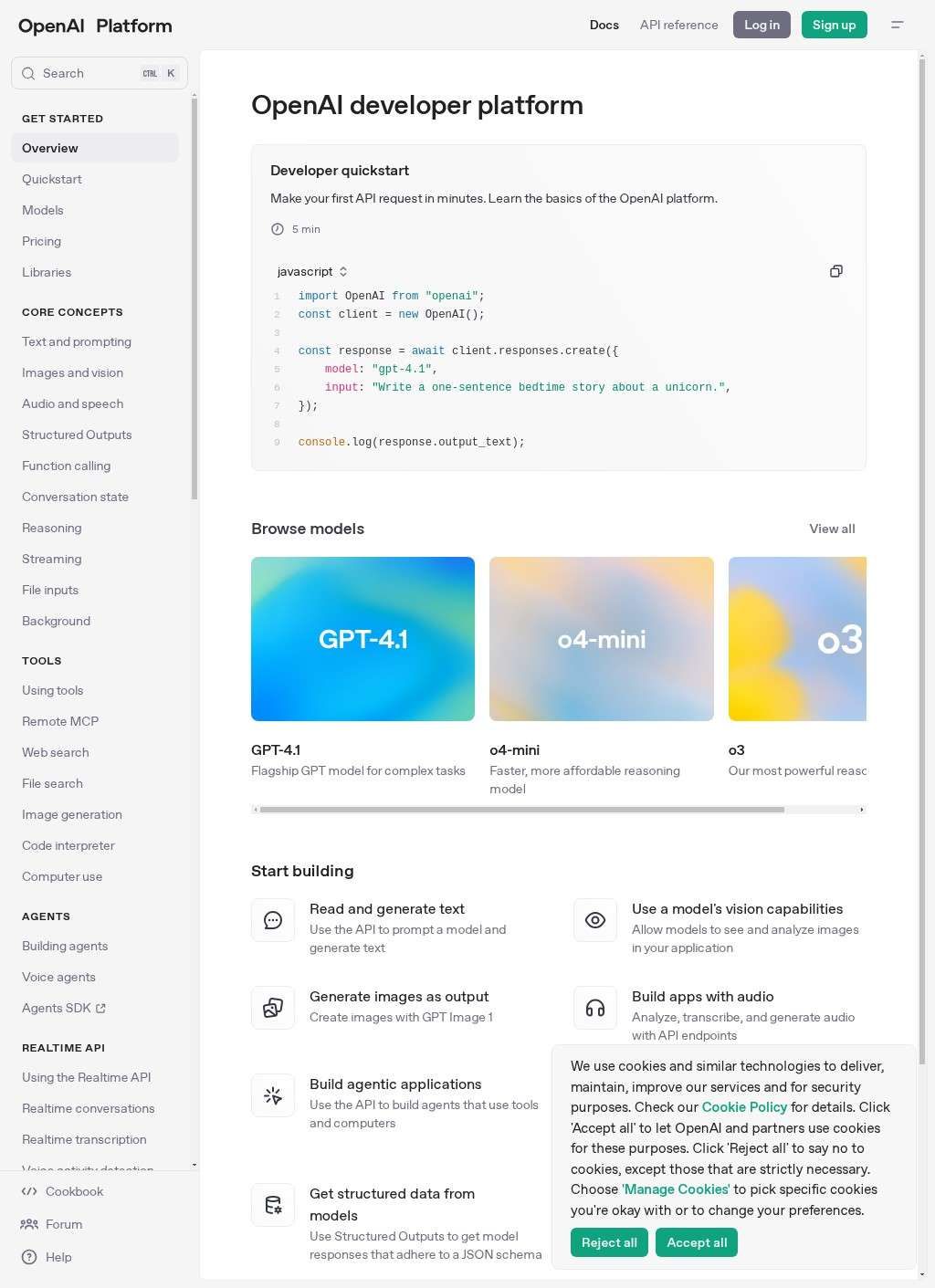OpenAI Platform serves as the primary gateway for developers and organizations seeking to integrate state-of-the-art artificial intelligence capabilities into their applications and workflows. This platform provides direct API access to OpenAI's most advanced models, including the GPT family of large language models, DALL-E image generation systems, and Whisper speech recognition technology. Developers can access these tools through straightforward API calls, making it possible to add sophisticated AI functionality to existing applications without needing extensive machine learning expertise. The platform stands out for its focus on practical implementation rather than theoretical concepts, giving developers immediate access to production-ready AI capabilities.
The service structure centers around several key model offerings that address different use cases and requirements. GPT-4 represents the flagship language model, capable of handling complex reasoning tasks, code generation, and extended conversations with context windows supporting up to 100,000 tokens. This means developers can process entire documents or maintain long-running conversations without losing context. GPT-3.5 Turbo provides a faster, more cost-effective option for applications that need quick responses without the full complexity of GPT-4. DALL-E enables applications to generate and edit images from text descriptions, while Whisper handles speech-to-text conversion with remarkable accuracy across multiple languages.
What distinguishes OpenAI Platform from other AI services is its emphasis on safety and responsible deployment. The platform includes built-in content filtering, usage monitoring, and rate limiting to prevent misuse while maintaining high performance for legitimate applications. OpenAI has invested heavily in alignment research, ensuring that their models behave predictably and refuse harmful requests. This safety-first approach gives developers confidence when deploying AI features in customer-facing applications, knowing that the underlying models have been thoroughly tested and refined.
The platform caters to different developer needs through flexible pricing and access options. Individual developers can start with free tier access that includes substantial monthly usage limits, perfect for experimentation and small projects. Growing businesses can scale up through pay-per-use pricing that charges based on actual token consumption, making costs predictable and tied to usage. Enterprise customers receive dedicated support, custom rate limits, and priority access to new features. This tiered approach ensures that everyone from solo developers to large corporations can find a suitable entry point.
Developer resources on the platform go beyond just API access to include comprehensive documentation, code examples, and interactive tools. The platform provides detailed guides for common use cases like chatbots, content generation, code completion, and data analysis. Interactive examples let developers test different prompts and see results immediately, helping them understand how to craft effective requests for their specific needs. The documentation includes best practices for prompt engineering, error handling, and performance optimization, giving developers the knowledge they need to build robust applications.
Recent additions to the platform reflect OpenAI's commitment to expanding AI capabilities beyond text generation. The introduction of function calling allows models to interact with external APIs and databases, enabling more dynamic and interactive applications. Vision capabilities let developers send images along with text prompts, opening up new possibilities for visual analysis and description. The platform also supports fine-tuning for organizations that need models customized for specific domains or use cases, though this requires larger datasets and additional technical expertise.
Integration capabilities make it straightforward to incorporate OpenAI's models into existing development workflows and tools. The platform provides SDKs for popular programming languages including Python, Node.js, and Go, with examples and starter templates for common frameworks. REST API access ensures compatibility with virtually any programming environment. For teams using specific development platforms, OpenAI maintains partnerships and integrations with services like GitHub Copilot, Microsoft Azure, and various no-code platforms.
Support and community resources help developers navigate challenges and share knowledge about effective AI implementation. OpenAI maintains an active developer community forum where users share prompts, discuss best practices, and troubleshoot issues together. The platform includes detailed API documentation with interactive examples, troubleshooting guides, and regular updates about new features and improvements. For enterprise customers, direct support channels provide faster response times and personalized assistance. The company also publishes research papers and blog posts that explain the technical foundations of their models, helping developers understand capabilities and limitations when designing applications.
